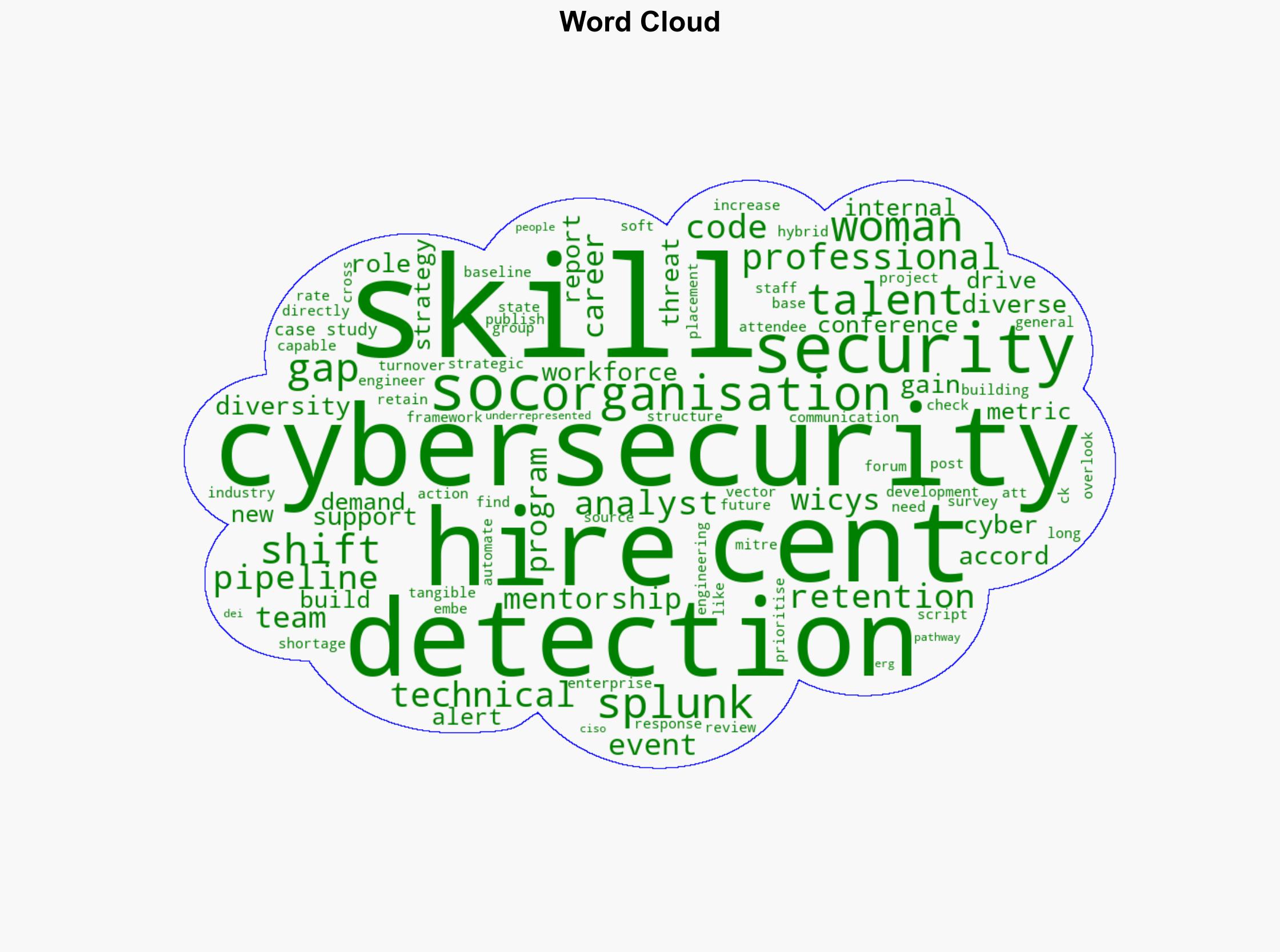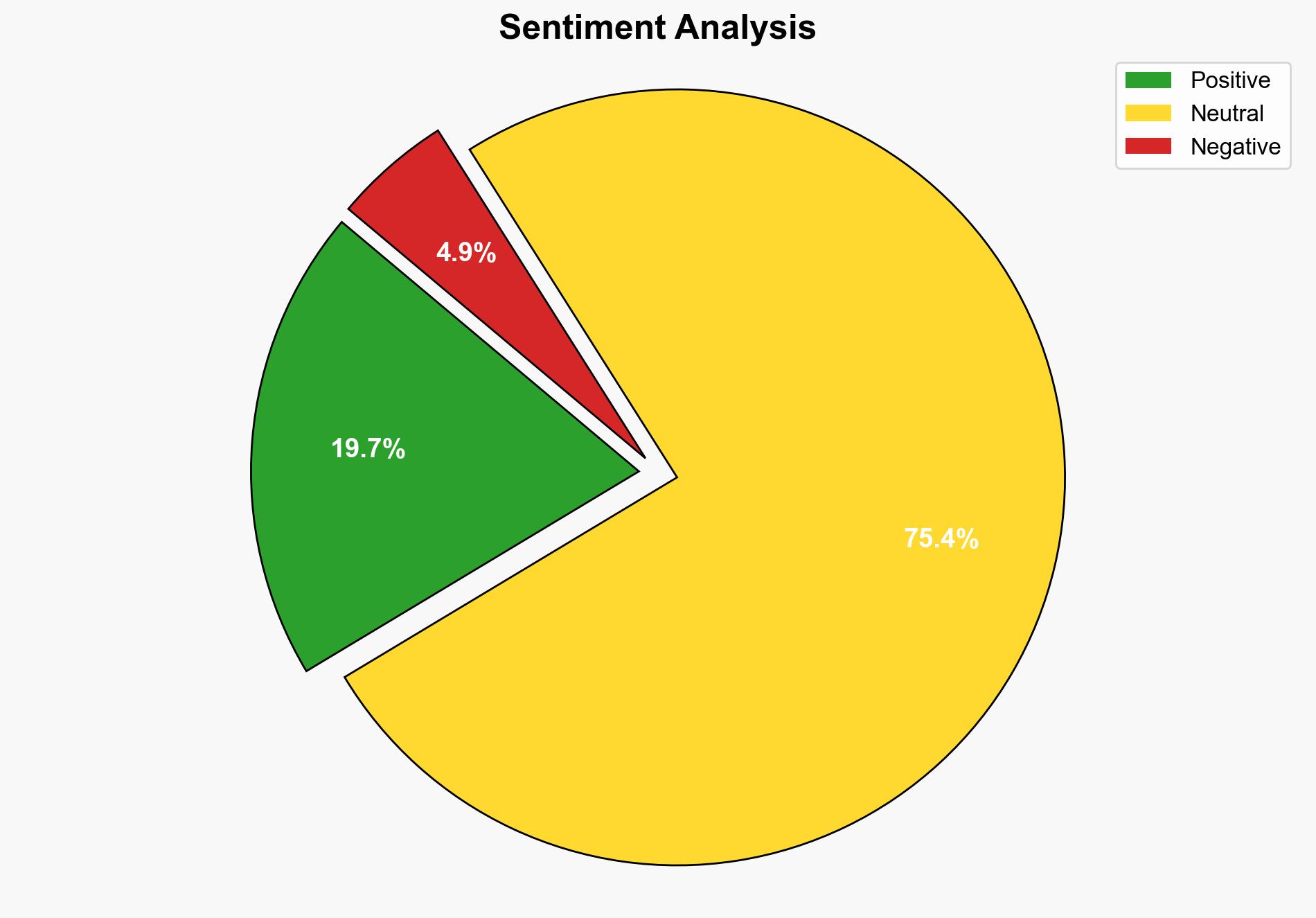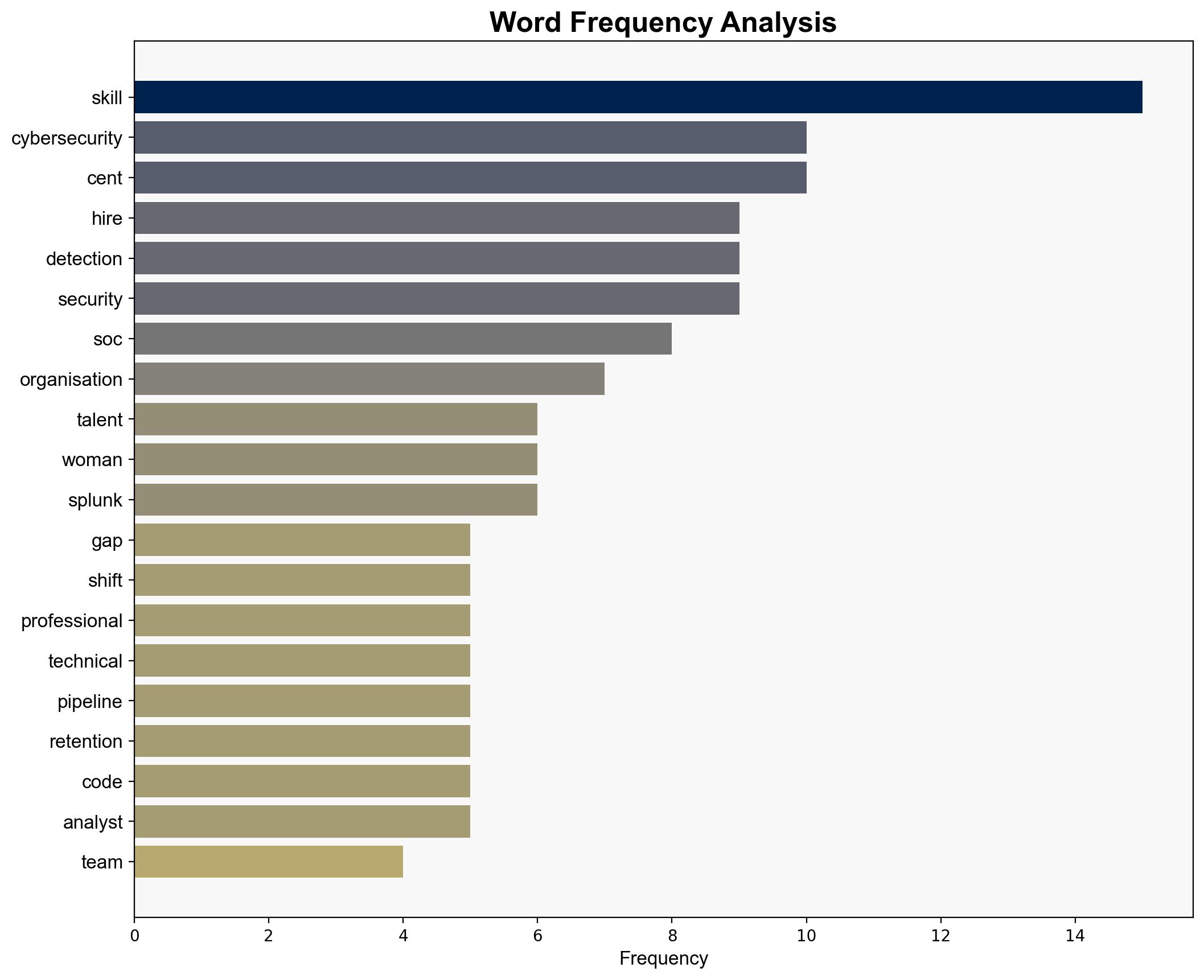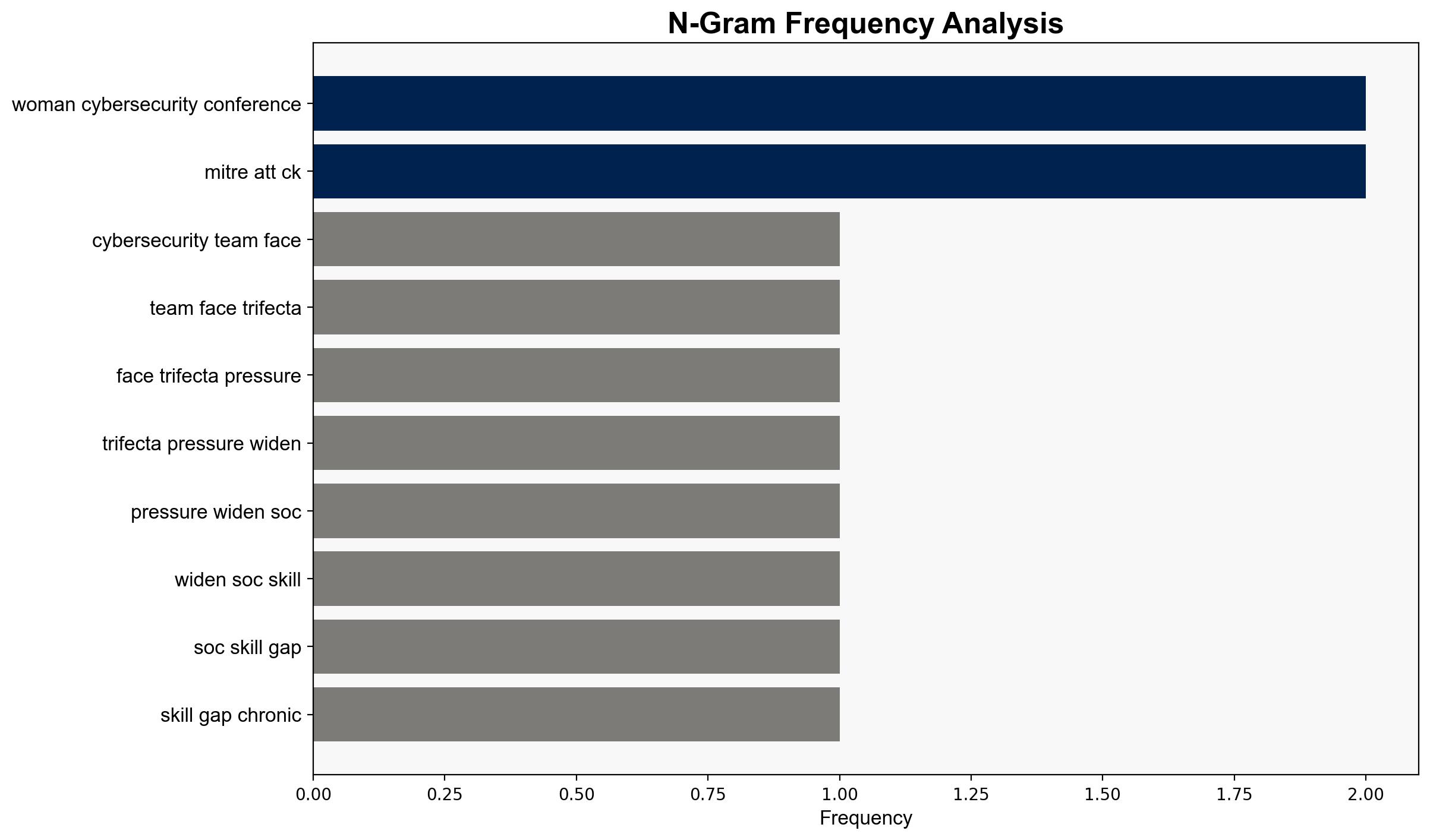Cybersecurity Workforce Trends in 2025 Skills Gap Diversity and SOC Readiness – Darknet.org.uk
Published on: 2025-08-27
Intelligence Report: Cybersecurity Workforce Trends in 2025 Skills Gap Diversity and SOC Readiness – Darknet.org.uk
1. BLUF (Bottom Line Up Front)
The most supported hypothesis is that the cybersecurity workforce will continue to face a significant skills gap and diversity challenge, despite efforts to address these issues. This is due to the persistent shortage of diverse talent and the evolving complexity of cybersecurity threats. Confidence level: Moderate. Recommended action: Organizations should enhance workforce development strategies by prioritizing diversity and hybrid skill sets to improve SOC readiness.
2. Competing Hypotheses
Hypothesis 1: The cybersecurity workforce will successfully close the skills gap and improve diversity by 2025, driven by strategic investments in workforce development and initiatives like women-focused cybersecurity conferences.
Hypothesis 2: Despite efforts, the cybersecurity workforce will continue to struggle with a skills gap and lack of diversity due to the rapid evolution of threats and insufficient adaptation of educational and training programs.
Using ACH 2.0, Hypothesis 2 is better supported as the source highlights ongoing challenges in achieving diversity and the persistent skills gap, despite initiatives like WiCyS. The data suggests that while there are improvements, they are not sufficient to meet the growing demands.
3. Key Assumptions and Red Flags
– Assumptions include the belief that current initiatives will be sufficient to close the skills gap and improve diversity.
– A red flag is the lack of concrete metrics on the success of diversity initiatives beyond anecdotal evidence.
– Potential bias in the optimistic portrayal of conference impacts without substantial data.
4. Implications and Strategic Risks
– Continued skills gap and diversity issues could lead to increased vulnerability to cyber threats.
– Economic risks include higher costs for cybersecurity talent and potential losses from breaches.
– Geopolitical risks involve national security threats if critical infrastructure remains under-protected.
– Psychological risks include burnout and turnover due to inadequate workforce support.
5. Recommendations and Outlook
- Organizations should invest in comprehensive training programs that emphasize hybrid skills, combining technical and soft skills.
- Enhance recruitment strategies to attract diverse talent, including partnerships with educational institutions.
- Scenario-based projections:
- Best Case: Successful integration of diverse talent and hybrid skills leads to a robust cybersecurity posture.
- Worst Case: Persistent skills gap results in increased cyber incidents and economic losses.
- Most Likely: Incremental improvements in diversity and skills, but challenges remain significant.
6. Key Individuals and Entities
No specific individuals are mentioned in the source text. Focus remains on organizations and initiatives like WiCyS and Splunk.
7. Thematic Tags
national security threats, cybersecurity, workforce development, diversity, skills gap





